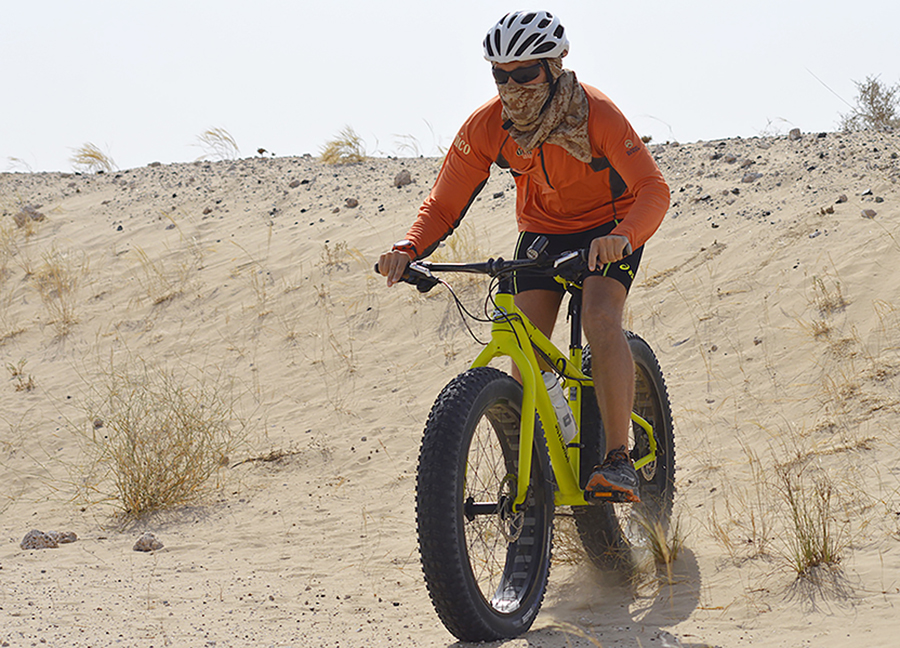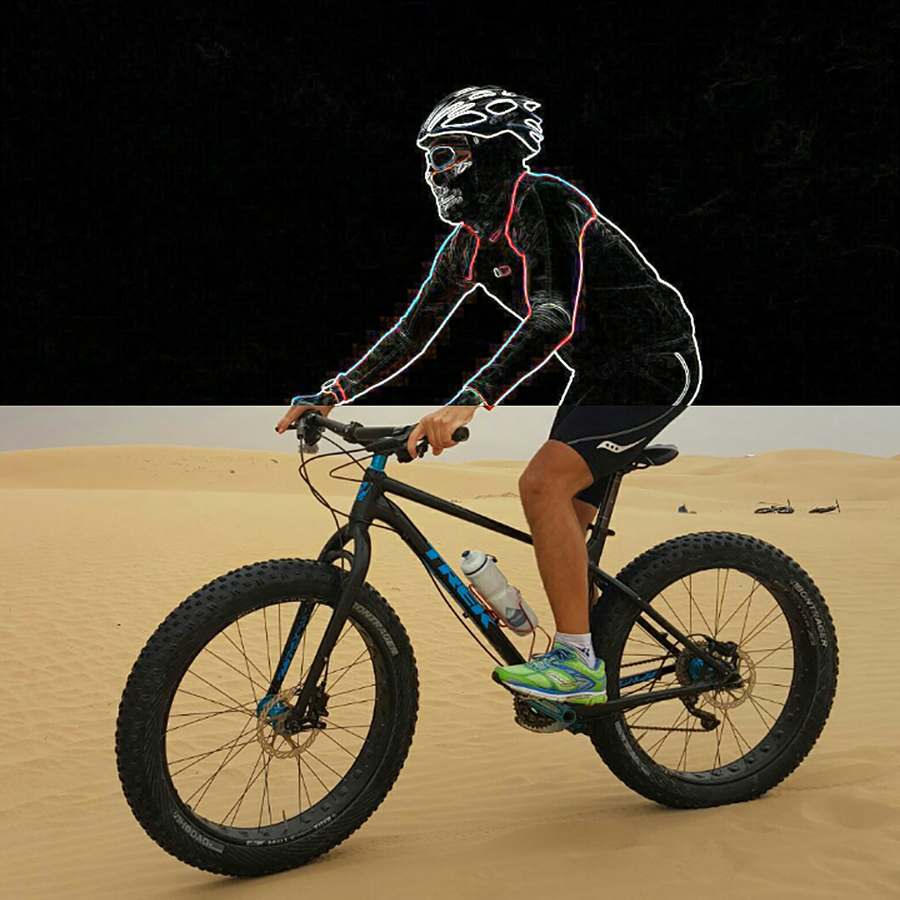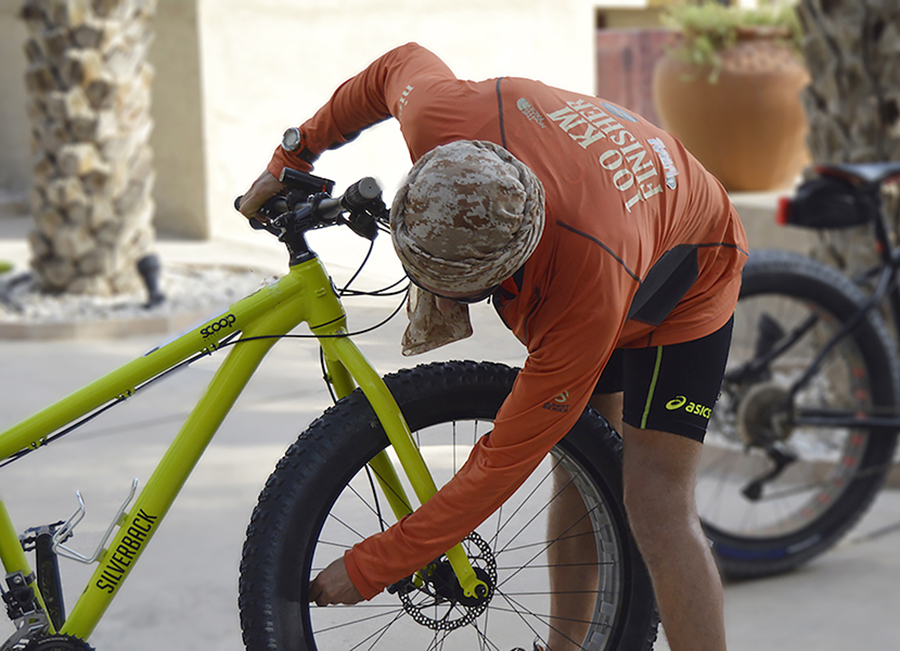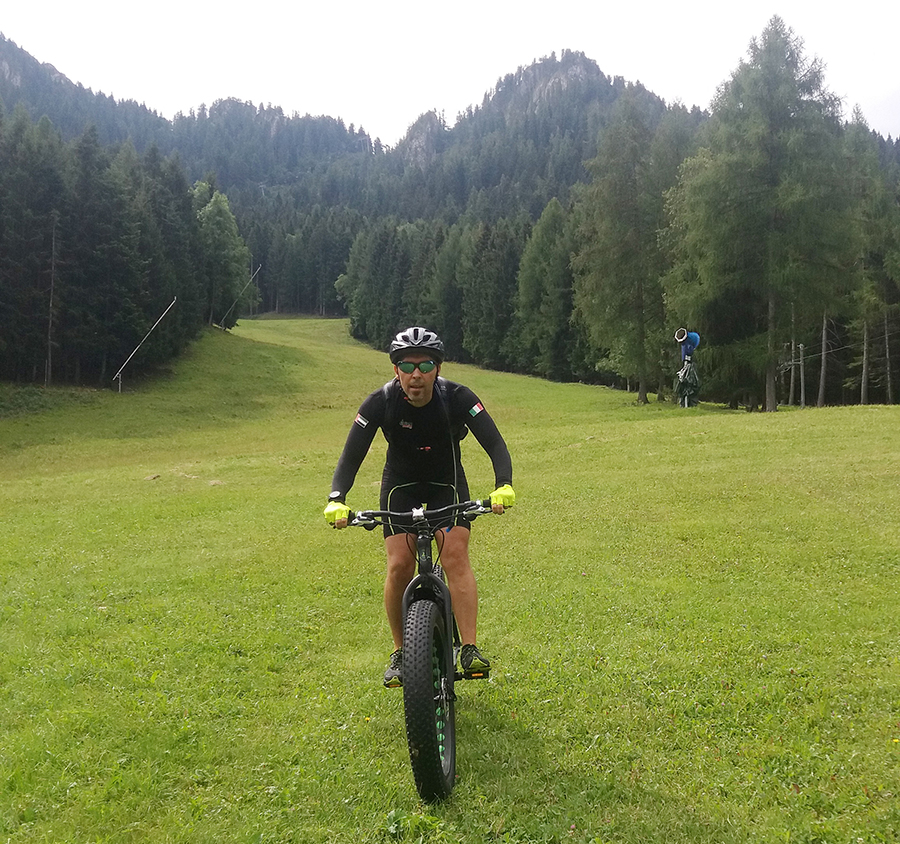Fatbikes were invented to be used in snow and sand, but are capable of traversing diverse terrain types including snow, sand, desert, bogs, mud, pavement, or traditional mountain biking trails. A number of extreme expeditions have also been made on fatbikes.
In December 2012 Eric Larsen attempted to ride a fatbike to the South Pole, but made it only a quarter of the way before he had to turn around. Maria Leijerstam became the first one to cycle to the South Pole, across the South Pole Traverse road on a tricycle with fatbike tires. On 21 January 2014, Daniel P. Burton became the first person to ride a bike across Antarctica to the South Pole, starting at Hercules Inlet and biking 1,247km (775mi) to the South Pole on a carbon fiber Borealis Yampa fatbike with 4.8 in (120mm) wide tires.
Even though you are going to ride your bike just for a trip, without attempting any world record or extreme expedition, if you are planning to in the desert or over the mountains, the proper gear can support you and help to avoid accidents and injuries.

Let’s be honest, a list of clothing recommendations (cycle suit, proper socks, etc.) or the usual bike gear (bike rack, multi-tool with chain breaker, etc.) could be its own, separate article. That’s why we are focusing on the particular needs you may have when facing different (potentially hostile) environments. Being half burnt or half frozen is not a good experience; as well as discovering you don’t have the proper tool miles away from home is not a good way to end your trip!
But before going deeper we invite you to double check the basic survival items: first aid kit, mobile phone fully charged (better a smartphone with GPS functionality or even consider a satellite phone if you are going to places out of coverage), an additional battery pack, enough water, some food (in case you are planning a long trip or you get isolated by a storm).
Recently HH Sheikh Mohammed bin Rashid Al Maktoum himself rescued 3 women bikers after a leisurely bike ride in Al Qudra desert went seriously wrong. Ms. Hutchison (one of the ladies) said the incredible encounter occurred on a Tuesday last November, when she and her friends decided to head to the cycling path for a 50km ride. They hired bikes, helmets, and lights, and set off with nothing but a backpack containing a bottle of water and an iPhone with 20 percent battery!

1. Pedals & Shoes
Every rider has a preference on their pedals, no matter the weather. Riders tend to be split between clipless and flat pedals. Just consider you may need to dismount from the bike and carry it over dunes, rocks or along steep slopes; so, use shoes that will also allow you to walk on rough terrain, but also to keep your feet warm during the winter period. Do not forget that also in the desert you may face a drastic thermal excursion overnight.
2. Gaiters
This is the perfect example of gear that has been re-purposed for fat bike sand adventures. Often used for hiking, mountaineering and other sports that require calf protection, gaiters can help your lower legs stay protected and prevent sand from falling down your boots for a hot surprise.
3. Gloves
In the desert you need gloves for a better grip and you can’t leave your hands under the sun for too long. Net fabrics make an excellent breathability with good protection too.

4. Face & Eye Protection
Facial covering is also important when it gets really hot. Sunglasses or goggles for your eyes, and for the rest of your face I’d suggest anything from a simple bandana or scarf to a guthra. The guthra also known as keffiyeh or shemagh is the traditional Middle Eastern headdress fashioned from a square scarf, usually made of cotton. It is typically worn by Arabs in arid regions as it provides protection from sunburn, dust and sand. But your guthra can be a real survival must-have tool, since it can be used as a warm layer, as bandage for minor wounds, tourniquet to stop bleeding, water filter, mosquito net and so on…

5. Helmet
The Helmet should be comfortable and lightweight and suitable for the temperature you are going to face.
In the desert, especially during daytime, you should not drink just to cool down (otherwise you will lose more and more fluids by sweating); better to wet your bandana or guthra and keep it under the helmet.
Nothing more to say about it but…. Always wear your helmet, properly sized and tied up!
6. Lights
Good lights on both the front and the back of the bike are essential for a safe ride, especially when winter brings fewer hours of daylight.
7. Hydration Pack
Always bring enough water with you. Even though you are planning not to drink (because it’s a short trip or because you are training your body not to drink during the workout), bring extra water with you: in a bottle and/or in a hydration pack. You may need that water to clean a wound or to support someone in trouble. And refill it every time you have opportunities.
In the desert you will need to keep your water cool but even with a reservoir full of ice cubes, you are typically going to end up with a pack full of tepid liquid after riding in summer for even just a couple of hours. A simple solution can be to create an extra insulating sleeve using a thin sheet of closed-cell foam and some sturdy tape.

8. High-powered mini pump and digital tire-pressure gauge
This may seem obvious. But anyone who’s ever tried to crank out 25psi with a wimpy mini pump knows better. Instead of getting stuck trailside with a bad case of arm pump and an under-inflated tire, carry a something that actually works. The right tire pressure means you are less likely to puncture, and more likely to maintain traction when others skid off the trail.
Fat-bike tires are typically marked as 26 x 4.0 though most are really more like 26 x 3.7 or 3.8. The actual size of the mounted tire will vary depending on the rim width used for the wheel. Because of the large volume of air a difference of just a 1 or 2 PSI will make a noticeable difference in how the tire interacts with the terrain. Typically, fatbike riders use pressures in the 8PSI range for soft conditions, 12-15PSI for trail riding and 20-25PSI for on-road or urban riding. But consider when you are planning a long ride you may need to deflate/inflate your tires according to the terrain condition.
9. Water proof jacket / gear
Mountain weather conditions can change dramatically from one hour to the next. They receive more rainfall than low lying areas because the temperature on top of mountains is lower than the temperature at sea level. Want to prevent getting soaked on a ride? Include some smart gear pieces in your pack to get covered in case of need: at least a water proof jacket.

10. Riding Buddy
Ok, technically not an accessory, but a good riding buddy or two makes every ride that much better and safer. In case you are alone, always share with some friends your route and timetable. ■
Keep on Fatbiking (in safety)!
Words by: Nico de Corato
Photos by: DubaiBlog & Provided

